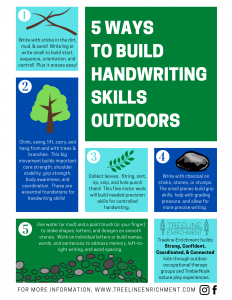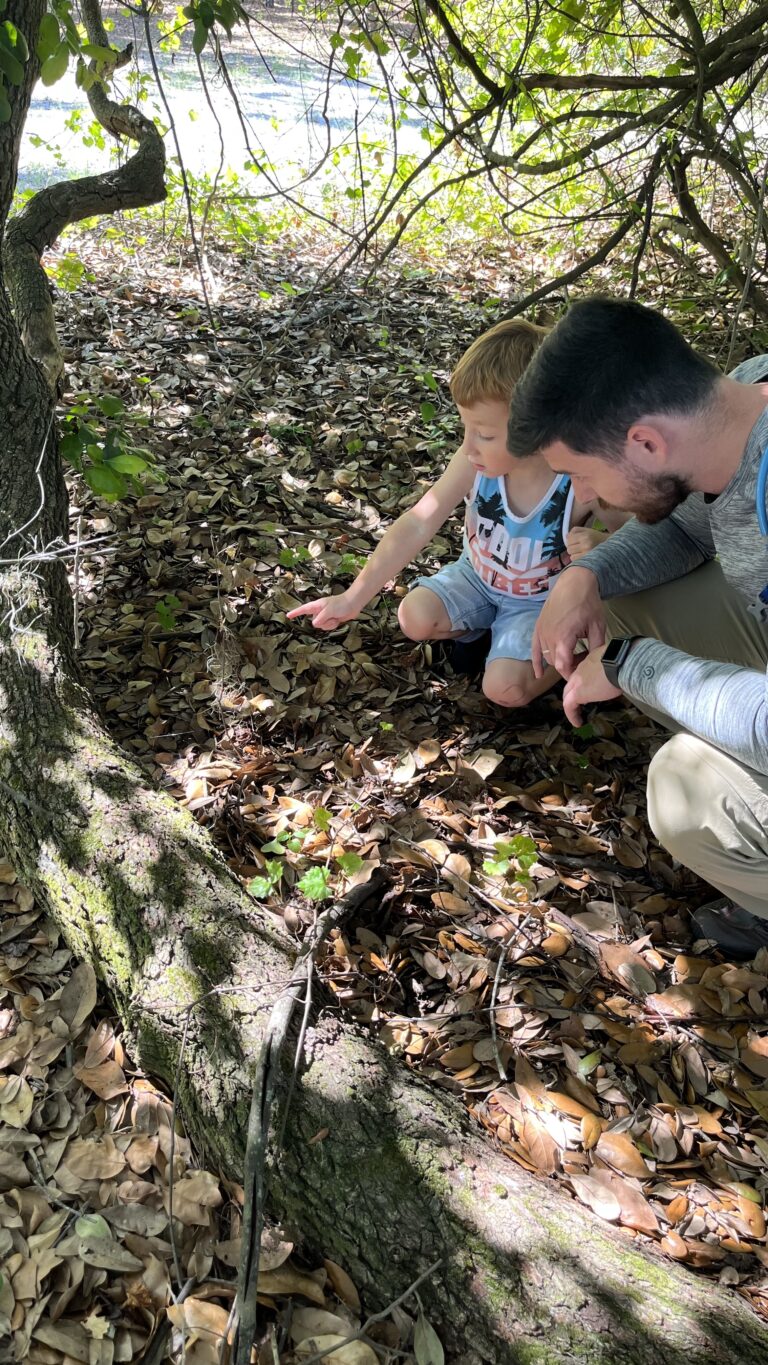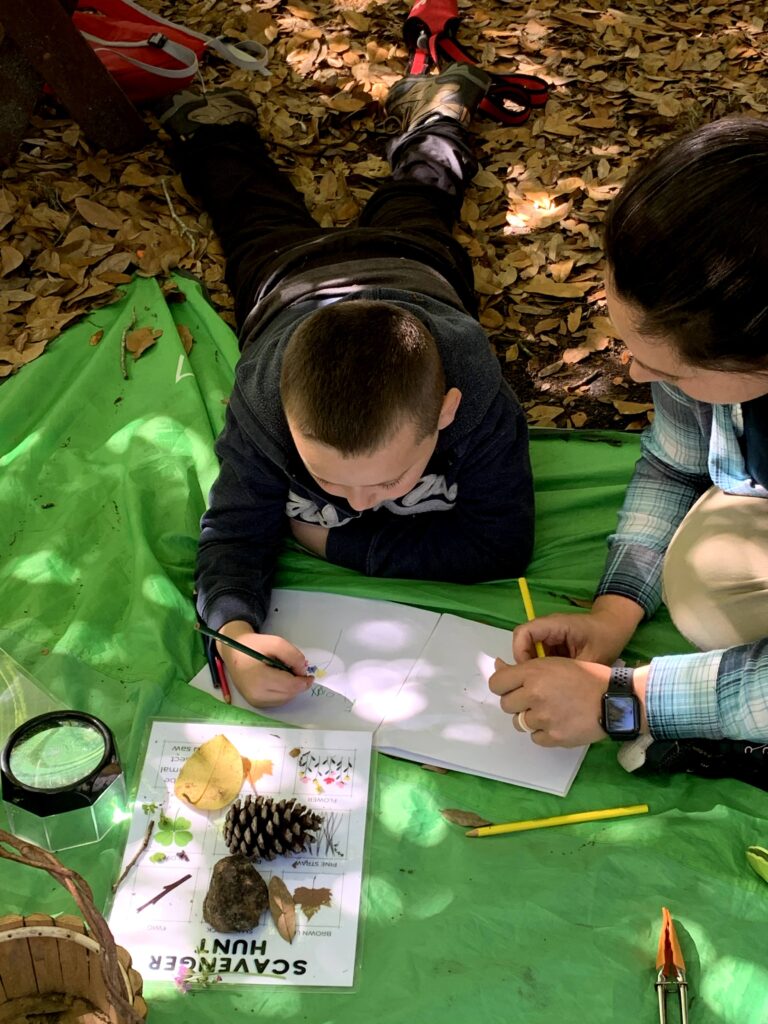How do I work on handwriting outdoors?
Handwriting is typically a skill taught and practiced inside.
But WHY?
The great outdoors affords an abundance of opportunities, inspirations, and experiences to help build strong, capable, and independent handwriters!
PLUS time outdoors has a positive impact on our attention, mood, sensory integration, and overall health and well being. So let’s head out for a walk in the neighborhood, hike along a trail, explore the beach, or find a cozy spot under a tree at a city park. Here are some tips and tools to help you get started!
PLAY: As a pediatric occupational therapist, I cannot emphasize enough the value of big play outdoors! Dig, swing, hang, crawl, climb, hike, roll, spin, flip, twist, build, and more. These experiences help to build the necessary core strength, shoulder stability, bilateral coordination, and hand skills needed for success with a refined, controlled skill such as handwriting.
Beginning Writers (Print or Cursive): Use natural materials (such as sticks, bark, rocks, or charcoal) to provide a unique sensory-rich learning experience.
- Use consistent terminology and consistent formation patterns (I love the Handwriting Without Tears method).
- Say YES to the mess! It’s easier to say yes to the mess when outside, so embrace messy handwriting experiences outside with paint, chalk, mud, water, and more! Make it big to engage the whole body in the writing process then size it down to learn the precision skill of penmanship.
- Keep it simple, 5-10 minutes tops, and practice often. Handwriting is a motor pattern that requires more frequent, shorter bursts of practice.
Mastering Writing: Continue to use natural materials to reinforce and remediate tricky skills (reversals, wood spacing, line placement). But embrace the opportunities of the great outdoors – consider making your own nature journal to draw and/or write about your discoveries, observations, and dreams. You can work on sizing, spacing, and line placement all while soaking in the benefits of Vitamin N (read more about that here)!
- Keep your expectations clear and strive to focus on just a few handwriting skills at a time. Use chalk to outline 1-2 for your child to focus on (i.e. word spacing, punctuation).
- Check word spacing using a blade a grass or thin flower petal.
- Provide a clipboard to allow for flexible seating / positioning (shockingly, handwriting does not have to be done at a table).
- Again, keep it simple! When focused on the mechanics of handwriting, more frequent shorter bursts are more effective than less frequent longer practice sessions.








